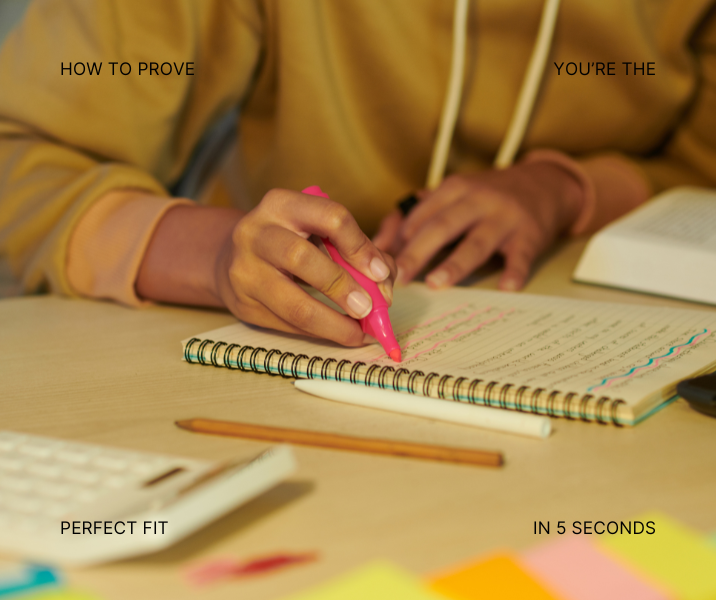How to Prove You’re the Perfect Fit in 5 Seconds: The Power of a Career Highlights Section
A resume’s job isn’t to list everything you’ve ever done, it’s to prove alignment between where you’ve been and where you’re headed. The fastest way to prove that alignment is by leading with clarity and relevance. In this post, we’ll break down how to use a Career Highlights section to instantly capture attention, communicate value, and position yourself for the roles you actually want.
A Resume Isn’t a Career Dump, It’s a Case for Alignment
Most job seekers try to fit their entire career history onto one page, but that’s not what decision-makers are scanning for. Your resume’s real purpose is to make a clear, immediate case for alignment: proving how your past experience connects to the future you’re targeting.
And since most recruiters and hiring managers decide within 5 seconds whether you’re worth a closer look, clarity isn’t optional. It’s the difference between a quick pass and a second look.
The Case for a Career Highlights Section
One of the simplest ways to prove alignment is to create a Career Highlights section before your Experience section.
Think of it as the trailer for your career story: 3 quick previews that capture the essence of what makes you right for the role.
BUT HERE’S THE IMPORTANT PART: This section isn’t about what you think is impressive. It’s about what’s relevant to your target roles.
Choose 3 impacts from your past experience that mirror the language and priorities found in the job listings you’re targeting.
Example: Career Highlights for an Email Marketing Manager
Here’s what an effective Career Highlights section can look like in practice, built around the 3 themes that consistently appeared across the client’s target roles.*
Career Highlights
Email & Lifecycle Marketing: Achieved 45% open rates and 7% CTR on customer newsletters (double industry benchmarks), supporting 90% customer retention.
Demand Generation: Drove 1,600+ demo page visits through a cold lead email, generating sales pipeline momentum that positioned the sales team to exceed next-quarter goals.
Content & SEO Strategy: Achieved #1 rankings for priority keywords, boosting site traffic and generating inbound demo and pricing requests.
Each heading represents one of the most sought-after competencies for this role, drawn directly from real job descriptions. Each bullet is concise, measurable, and written in the same language hiring teams use to define success.
*When I work with clients, this is exactly where we start. You send me 3–5 target job listings, and I do a deep dive to identify repeating priorities, keywords, and success metrics. From there, I build a custom blueprint that shows how we’ll prove alignment — strategically, visually, and linguistically — across your resume and LinkedIn.
Why It Works
When you lead with your Career Highlights, you take control of how your story is read. Instead of hoping recruiters connect the dots, you’re drawing the map for them.
You’re doing three things at once:
Framing your story around the roles you want next — not the ones you’ve outgrown.
Directing attention to measurable outcomes that prove your relevance.
Guiding both humans and hiring systems toward the version of your story that matches their priorities.
This works because it mirrors how recruiters and algorithms evaluate fit. It turns your resume from a backward-looking list into a forward-focused positioning tool… one that clearly connects your experience to their goals.
Start With Research, Not Writing
Before you touch your resume, pull 3–5 job postings for the roles you’re targeting. Highlight recurring themes and keywords, things like growth, leadership, customer impact, innovation.
That’s your roadmap.
Your Career Highlights section should speak directly to those patterns.
When you build your resume around alignment, you stop relying on luck and start positioning yourself intentionally for what’s next.
If your resume isn’t landing, it’s not you, it’s the story you’re presenting.
Let’s rewrite it to reflect where you’re headed, not just where you’ve been.

